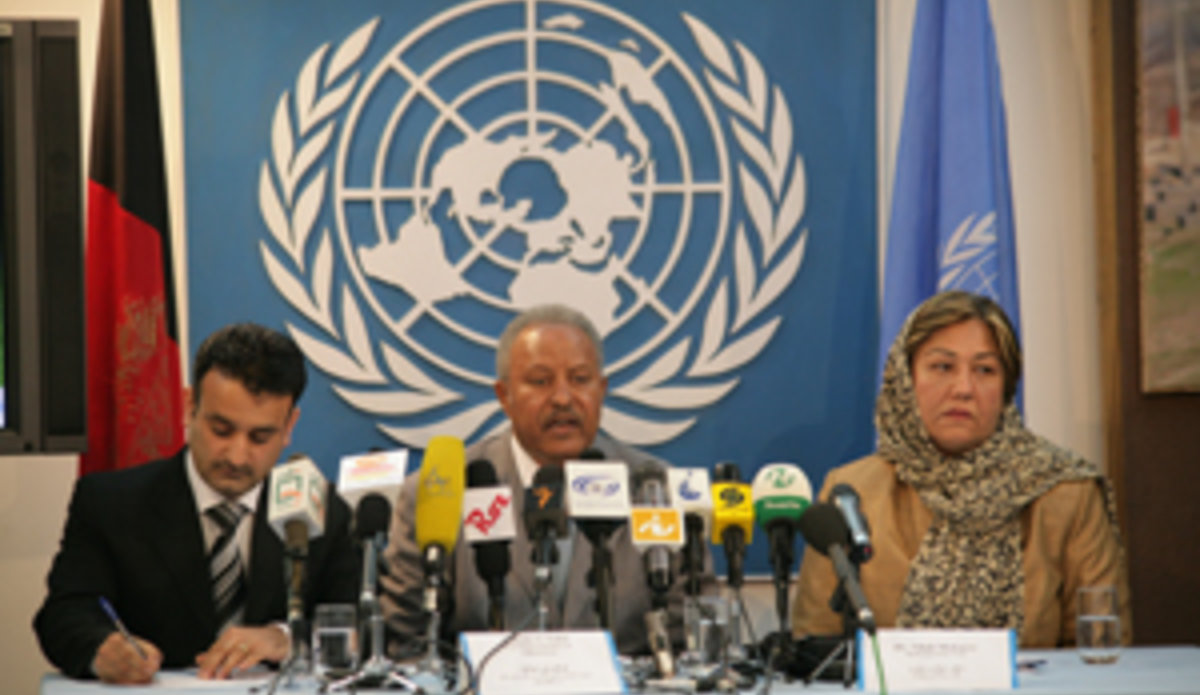Afghanistan set to become self-sufficient in wheat production
4 May 2009 - Afghanistan is likely to become self-sufficient in wheat production this year following efforts by the Government, Afghan farmers, the donor community and good levels of rainfall.
“In 2007 Afghanistan produced 92 per cent of its (wheat) needs. This year looks much better than last year. We could say that maybe we are approaching self sufficiency,” said Tekeste Tekie, country representative for the United Nations Food and Agriculture Organization (FAO) at a press conference in Kabul today.
Wheat is Afghanistan’s main crop and constitutes 85 per cent of country’s agriculture production. The country witnessed an annual decline of 3.5 per cent in agriculture production between 1978 and 2004.
“At this stage the estimated yield will be 40 to 50 per cent more than last year,” said Mr. Tekie.
There is approximately 1.5 million hectares of rain-fed land in Afghanistan and farmers rely on rains for agriculture production. It is expected Afghanistan will have an increased yield this year due to significant increases in precipitation.
“The increase in yield is expected to be good, especially under rain-fed area with significant growth of wheat, chickpea lentil and other crops,” added Mr. Tekie.
“In the east of the country, the wheat cultivated area is 10% greater than last year and the expected yield also looks better than last year because of good rain,” said Mr. Tekie adding that north eastern provinces of Baghlan, Takhar and Kunduz will see a 30 per cent increase in yield compared to previous years.
Afghanistan is an agricultural country. 80 per cent of its population live in rural areas and depend on agriculture and animal husbandry for their livelihoods. With only 12 to 15 per cent of land being arable there is increasing pressure for farmers to find land for both for agriculture as well as for livestock pasture.
“What we need to do here is to make agriculture more efficient. At the moment there are about 2. 6 million hectares of land under irrigation. It is a matter of investing in agriculture, expanding irrigation and increasing the yield by using certified seeds and fertilizers and plant protection to fight against disease and pests” said Mr. Tekie.
19,000 tones of certified seeds have been distributed to poor farmers throughout Afghanistan last year. FAO and the Ministry of Agriculture, Irrigation and Livestock produced two new wheat varieties in 2008
Rehabilitation of Irrigation canals, destroyed by decades of the civil war, is essential for agriculture production in Afghanistan. Since 2002, rehabilitation of irrigation system of the country increased the irrigated area by 200,000 hectares of land.
A 47.5 kilometre long canal was rehabilitated in Nimroz province with technical support from FAO. Thanks to this canal 16,500 hectares of land now is under irrigation.
Afghanistan was once a leading food producer in the region, and has long been famous for its fruits and vegetables. In the past year it has emerged once again as an exporter of several crops, including pomegranates.
At the recent Joint Coordination and Monitoring Board (JCMB) meeting five agriculture priorities were set for the current year: a scheme to purchase and then supply seed to farmers; help for farmers in leasing unused government land quickly and fairly; improved access to credit for farmers; a project to help change management at the ministry; and an agricultural and rural development facility involving Afghanistan’s main economics ministries, including the Ministry of Agriculture.
By Homayon Khoram, UNAMA
Website: Ministry of Agriculture, Irrigation and Livestock
 UN
UN







